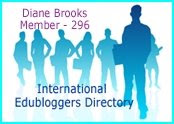The K-12 Online Conference invites participation from all educators from around the world who are interested in innovative ways Web 2.0 tools and technologies can be used to improve learning. This is a FREE conference run by volunteers and open to everyone, no registration is required. The conference theme is “Playing with Boundaries”. The 2007 conference begins with a pre-conference keynote the week of October 8, 2007. The following two weeks, October 15-19 and October 22-26, forty presentations will be posted online to the conference blog (this website) for participants to download and view. Live Events in the form of three “Fireside Chats” and a culminating “When Night Falls” event will be announced. Everyone is encouraged to participate in both live events during the conference as well as asynchronous conversations.
Derek Wenmouth, from Core Education in Christchurch, is a key note presenter. He has put up a 'taster' video - check it out and see what you think.








 Web site: http://ictineducation.webege.com/
Web site: http://ictineducation.webege.com/









